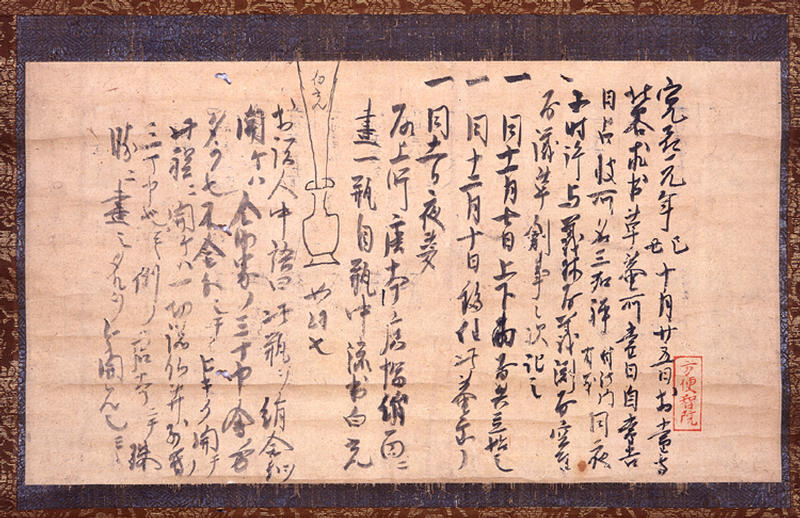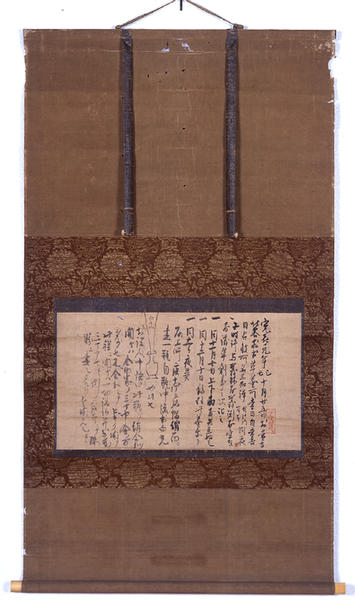Fragment of Yume no ki, by Priest Myoe
- Kamakura period
- 13世紀
- Hanging scroll, ink on paper
- H-28.2 W-50.8
- Miho Museum
Catalogue Entry
Myoe Shonin (1173-1232) was a high-ranking monk of the Kegon Sect of Buddhism and was active in the beginning of the Kamakura period. He was much admired as a priest of virtue for his profound learning and noble deeds. Myoe Shonin was born to a distinguished family in Kii Province (present-day Wakayama and Mie Prefectures). He lost his parents as a child, and went to Kyoto to live with his uncle Jogaku, who was a monk at Jingoji Temple in Mt. Takao. At age 16, he renounced the world and was initiated into Buddhism at Todaiji Temple in Nara, whereupon he took the name Myoebo Joben. From the age of 36, he became known as Koben. Myoe then returned to his homeland to leave the worldliness of this world and led a rigorous life of religious training in the Yuasa Bay area. During this time, it is said that Myoe attempted to go to India for the love of Buddha, but the deities enshrined in Kasuga Shrine prohibited him from embarking on this trip. With the slogan "Return to Buddha," he tried to proselytize people to the Kegon Sect. In 1206, the retired Emperor Gotoba granted him land in Toganoo that belonged to Jingoji Temple, where he built Kozanji Temple. He was benevolent and loved nature and all living beings. Myoe was a capable calligrapher, too. A Zen priest named Eisai gave Myoe some tea seedlings, with which Myoe successfully cultivated tea in the hills of Toganoo.
He recorded his dreams for forty years from the age of nineteen through fifty-eight (1191-1230), because he believed that dreaming is a type of learning. The record that he made is Yume no ki (Records of Dreams). Yume no ki is also known as On-yume no ki or On-yume on-nikki. Originally, Yume no ki comprised 17 scrolls, seven books, and 28 sheets of unbound pages, but two scrolls came to the attention of the public, subsequently called Yume no ki, which are especially treasured. The present piece was written on the 25th day of the tenth month of 1229, when he was 57 years of age. The strokes are vigorous, and white light emanating from a flower vase, symbolizing a goddess of India, is drawn in the margin. Typically he used waste paper back, and illustrated pieces such as the present work are highly valued.

